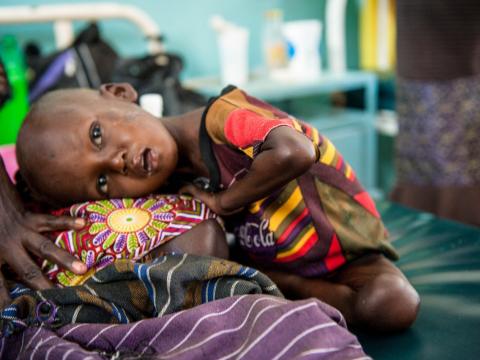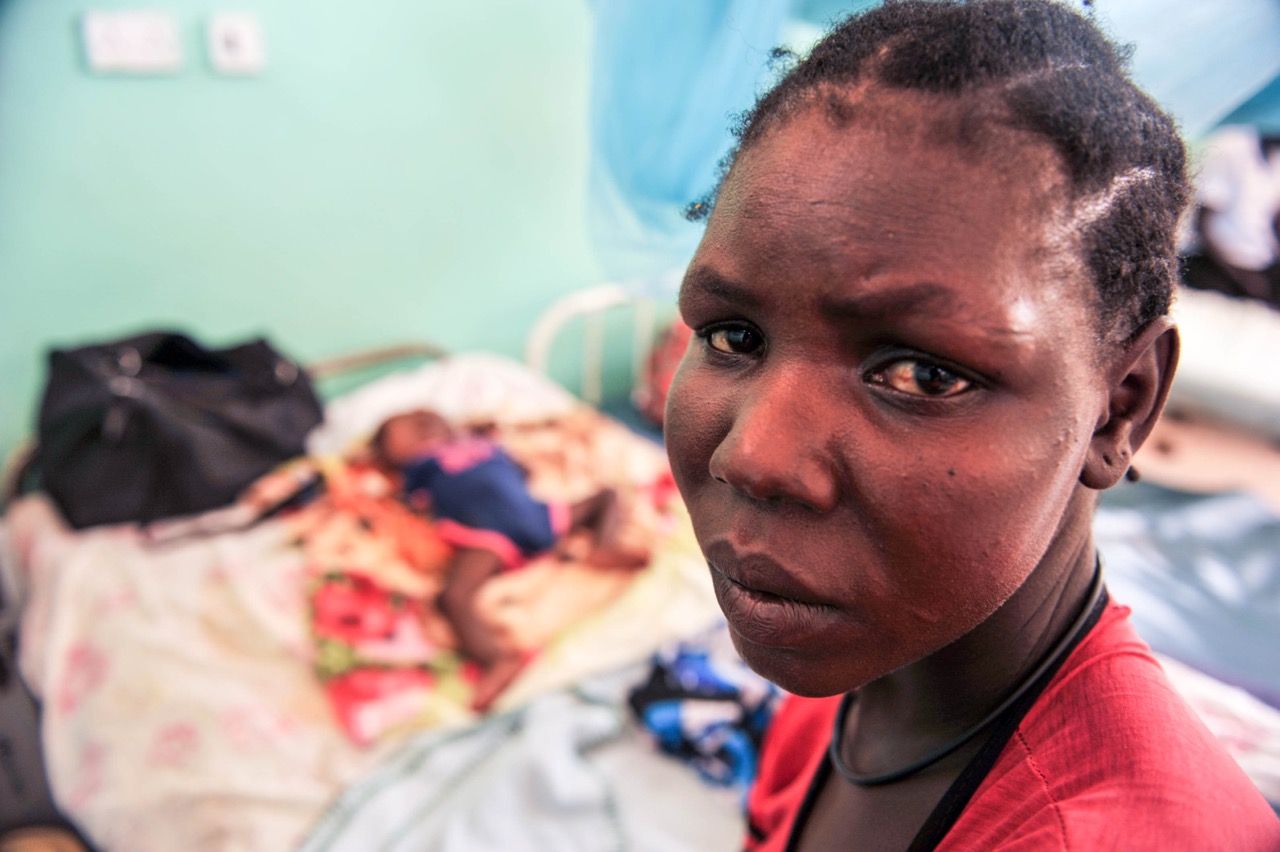Eyewitness to Crisis: Turkana's malnourished children continue to be at risk

Just before my heart broke, I was cheerfully chatting with a hospital head nurse.
And then I heard her.
Two-year-old Scholastica shrieking in a high-pitched tone. Her tiny voice doing the only thing it could, cry in pain.
Approaching her metal bed in the Lodwar County hospital, it became apparent something was desperately wrong. Her emaciated body was brittle, she wore the clothes of a newborn, despite being age two.
Her mom told me she could barely sit up, that walking was impossible for Scholastica, that even eating solid food was not an option. Scholastica is just 5 kilograms – the same weight as a bag of rice that I buy at the grocery store each week.
Scholastica arrived at the hospital with swollen feet, her joints were stiff and couldn’t do anything but lie in pain when I met her. She was diagnosed with oedema – which can lead to heart failure. Her body is so weak that it has no immunity to fight diseases. Recently, Scholastica caught pulmonary tuberculosis, which is making her situation worse.
Her mother Nancy told me that her daughter’s favourite foods are bananas and avocados.
Yet, a drought in this corner of Kenya has stopped all the fruit from growing and the prices of a single banana cost more than what most poor people earn during a half-day’s work.
Across Kenya, 3.4 million people are being affected by drought. More than 450,000 children under age five are malnourished. In this area, one in every three children are malnourished.
Scholastica is far from the only child in this ward. There are 23 other children who have been spending weeks trying to recover from severe acute malnutrition here.
A moment inside the pediatric ward fills like an eternity. My heart pauses as I see the desperate state of the children lying in beds. They are so small, so frail that they look like pieces of disfigured artwork.
A state of dread creeps in. What will happen to these children who don’t have food at home? Will they be able to recover?
Scholastica remained crying as I met Naroi Inok, a boy in another pediatric ward of the hospital.
He too was trying to fight severe acute malnutrition. He was so weak that he could barely move his head from side to side. He struggled to swallow a bottle top full of water. His mother told me he had no appetite and that he was infected with oral thrush – a fungus in his mouth that made it difficult to drink or eat. The boy was also diagnosed with anemia and had a persistent cough.
Outside the treatment wards, a cream board recorded the number of child patients admitted with malnutrition during the past 12 months. The children were either checked off as admitted, cured or dead.
Before I left, I checked Scholastica for the second time. She is being given F75, a special formula milk that contains iron, potassium and sorghum. She is trying to feed, trying to stay alive.
James Eipa is a nutritionist at the hospital.
“With severely acute malnourished children, they need potassium rather than sodium. Formula 75 contains a lot of potassium to balance the electrolytes that are critical for nerve and muscle cell function,” he says.
Death seems to be slowly courting children in this hospital. A candle in the wind waiting could blow off if no attention is given out as soon as possible.
This is no life for a child. This is no life for a mother. Families need nutritious healthy meals that will keep them healthy and sustain their life. Children Scholastica’s age should be playing, discovering the world around them. More needs to be done to save the lives of children in Turkana.
World Vision has launched a nutrition programme in Turkana and is providing more than 130,000 children with nutritious food each month. More needs to be done to ensure that more children are reached and given the opportunity to reach their potential.
About the author: Zipporah Kageha Karani is a communication officer specializing in disaster management for World Vision Kenya. As a former journalist, she has worked across the country, covering stories related to children.



